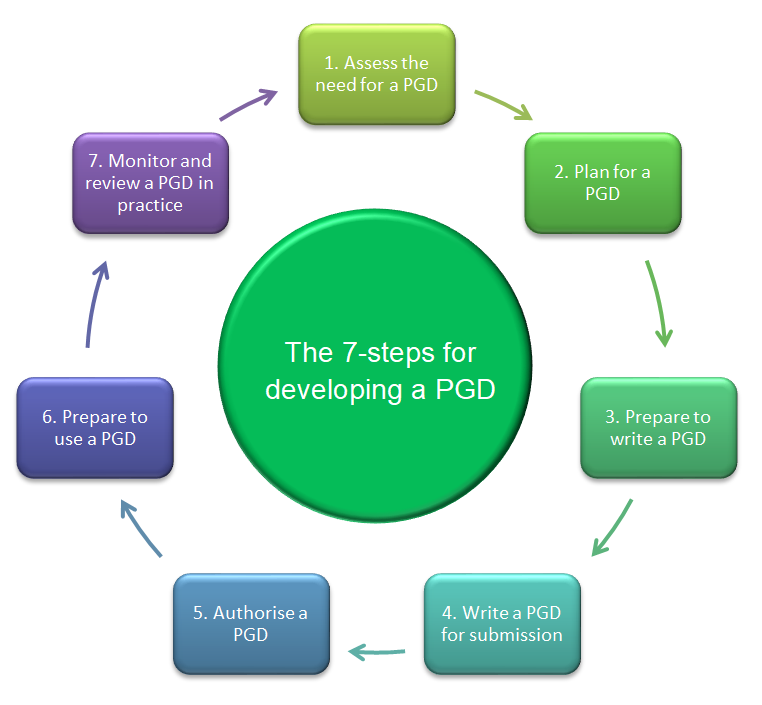About developing PGDs
This step by step guide is to help organisations, potential authors and signatories of PGDs consider, plan and follow necessary processes involved in the development and authorisation of PGDs.
These articles aim to help achieve compliance with legislation and NICE MPG2 Patient Group Directions 2017.
Links are added to help navigate the Specialist Pharmacy Service PGD resources for further, more detailed, information as well as NICE MPG2 Patient Group Directions 2017.
Key Points
Advice and links have been repeated throughout the steps because the associated tasks may vary at different stages and this is a cyclical process. Key points to note include:
- The preferred way for patients to receive medicines is for a prescriber to provide care for an individual patient on a one-to-one basis.
- A PGD should not be used where there is an alternative legal mechanism for the administration or supply of medicine. When Patient Group Directions are not required contains further information.
- Developing and maintaining a PGD is a stepwise and cyclical process.
- PGD development requires a multi-disciplinary approach, knowledge about PGD legislation and governance as well as clinical expertise, and knowledge about the service where the PGD is being considered. Cross organisational working may be required.
- Ensure all those involved understand their role and responsibilities.
- Always consider related processes and policies and plan ahead for implementation.
- Make sure that there is formal, documented agreement at each stage in the process.
- Do not refer to each stage in this guide in isolation but plan ahead and be familiar with the different stages in the process.
The cyclical PGD process
Before starting
There are some basic points to consider before embarking on developing a PGD:
- Remember that the preferred way for patients to receive medicines is for a prescriber to provide care for an individual patient on a one-to-one basis. Consider possible use of exemptions, protocols or independent prescribers as alternatives to a PGD. contains further information.
- Health professionals should refer to their own regulatory or professional bodies standards/guidance where available e.g. GMC Prescribing Guidance, GPhC Standards, HCPC Standards and NMC Standards.
- Do not work in isolation – PGD development requires a multi-disciplinary approach, knowledge about PGD legislation and governance as well as clinical expertise and knowledge about the service where the PGD is being considered.
- A PGD is not a quick fix – it can take several months to consider, develop and authorise a PGD.
- Timeframes and deadlines – make sure these are agreed and are realistic at each stage of the process.
Further information
Update history
- Link updated
- Published
